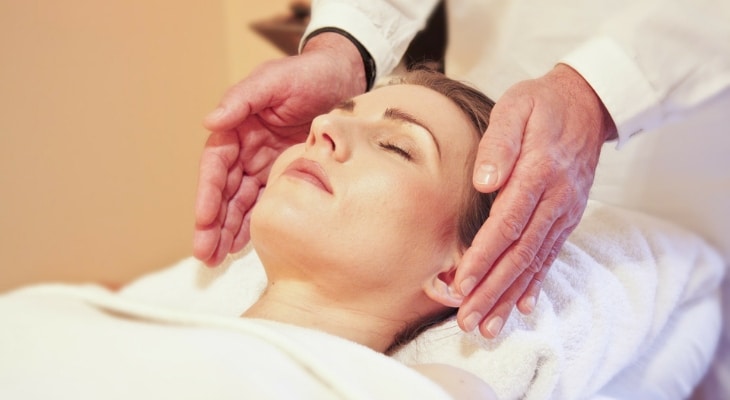Why More Australians Than Ever are Embracing Alternative Therapies
The number of Australians embracing natural healthcare and alternative therapies is steadily on the rise, and the state of the industry has never been healthier.
Complementary and alternative medicine (CAM) is used by a large majority of the population, with the latest reports showing that two out of three Australians have turned to some form of CAM in the past 12-18 months — either visiting a practitioner or using remedies, supplements or self-help techniques.
There’s no question: CAM is now an established part of Australian healthcare, and the statistics reflect a significant growth trend across the globe.
Towards a Holistic Solution
What’s behind the continuing upswing towards alternative therapies and treatments such as acupuncture, massage, naturopathy, homeopathy and osteopathy versus mainstream methods?
Elizabeth Greenwood, National President of the Australian National Therapists Association (ANTA), believes it’s primarily because CAM practitioners focus on treating the individual, and consumers crave that focus. “People want to have an active role in their healthcare,” she says, “and they also want to talk to someone who won’t just look at the symptoms, but will also look at the underlying causes.”
In other words, Australians want to be treated holistically. Matthew Leach, a research fellow at the Australian Research Centre for Complementary and Integrative Medicine, says that not so long ago, the main reasons consumers were turning away from mainstream medicine stemmed from dissatisfaction and disillusionment with its traditionally paternalistic approach, in which the doctor called all the shots, and the patient pretty much did what he or she was told.

“Certainly people have had experience with poor communication, adverse events, limited choices and undesirable outcomes for their conditions in mainstream medicine,” he notes. “But more recent work suggests that the increased interest is driven by people’s beliefs and motivations.
“They’re often motivated by the fact that CAM generally is much more of a partnership in the way it manages people, and the level of respect and communication that comes during a consultation.”
More Australians’ healthcare preferences are becoming aligned with the core principles of complementary and alternative therapies, including the belief that illness occurs if the body is out of balance; that all factors that influence health, wellness and disease are taken into consideration, including mind, spirit and community, as well as the body; that gentler alternative therapies must be tried first before harsher ones; that patient and practitioner are partners in the healing process; that effective interventions that are natural and less invasive should be used whenever possible; and that there is no quick fix, since healing and balance take time.
The Female Way
According to the latest research, more women than men use CAM, and they’re likely to be middle-aged and have a higher education. There’s no definitive reason why this gender difference exists, but the findings are consistent with global CAM trends.
“If you look across any field of healthcare, women are more likely to be engaged with a GP or a physiotherapist or a naturopath,” Leach points out. “They are also more likely to have a preference towards holistic models of health.”
One US study examining the difference between male and female CAM users put it this way: “Relative to men, women were motivated to use CAM for a number of reasons (for example, general wellness or general disease prevention, improving energy, and improving immune function), all of which related to a need to improve one’s health and wellbeing. To some extent, this finding is not surprising as women are generally more likely than men to utilise preventative healthcare services, to seek health information for both illness and wellness, and to have greater healthcare needs.”

A bright future
According to the 2018 industry snapshot by Complementary Medicines Australia (CMA), the industry has hit $4.9 billion in revenue, with a $2 billion growth over the past five years. The vitamin and dietary supplement category has doubled in the past decade, thanks in large part to ongoing support by regulatory reforms by the Australian government.
And among Australia’s 8.1 million complementary medicine consumers, demand is high for dietary supplements supporting general health, heart health, joint health, digestive health and women’s health.
Consumers’ purchasing options have expanded, too, as more pharmacies, supermarkets, health food stores and online shopping channels provide a wider range of choices. And consumer demand reflects a move away from traditional pharmaceutical treatments for their health conditions and chronic illnesses.
“The general view is that most complementary medicines are relatively safe,” says Leach. “They’re natural, there’s low risk of toxicity, and, when taken under the guidance of a qualified health practitioner, users are unlikely to get the same adverse events as they would taking a pharmaceutical.”
Growth in the CAM industry is also a powerful driving force for employment, manufacturing, scientific evaluation and research. “Certain universities are carrying out more clinical research,” ANTA’s Greenwood confirms. “A lot of students who come out of college are going into clinical practice or research as well. The profession is growing from the ground upwards. I think we’ve got a strong, bright future ahead of us.”
-
Get your FREE ticket
- REGISTER FOR FREE
